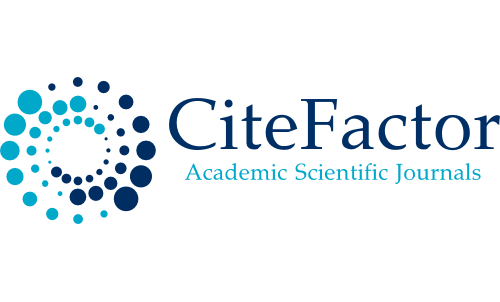Biomarcadores na rinite alérgica: qual a importância e potencial diagnóstico?
DOI:
https://doi.org/10.17765/1983-1870.2017v10n1p181-189Palavras-chave:
Biomarcadores, Rinite alérgica, Citocinas, Interleucinas, Eicosanoides.Resumo
O objetivo deste estudo é apontar quais os novos potenciais marcadores biológicos na rinite alérgica (RA). Buscou-se nas bases de dados Scielo e PUBMED artigos com os descritores “Rinite Alérgica” e “Biomarcadores” ou “Citocinas” ou “Interleucinas” ou “Eicosanoides”, bem como na língua inglesa. A perspectiva do uso de novos biomarcadores na rinite alérgica vem sendo pesquisada, visto que marcadores sensíveis e específicos da doença poderiam permitir rápido diagnóstico, avaliação do estágio da doença e estimação da resposta ao tratamento. Vários métodos para coleta de amostras não invasivos ou semi-invasivos nas vias aéreas oferecem a possibilidade de mensuração de uma grande quantidade de novos biomarcadores na RA. Como potenciais biomarcadores, a análise do perfil de citocinas nasais apresenta uma boa caracterização diagnóstica (IL-5 e IL-13), além da relação de severidade da doença (IL-9 e IL-17B). Como avaliação isolada, a dosagem sérica de Proteína da Célula de Clara (CC16) parece ter grande potencial, pois permite o diagnóstico e seus níveis estão inversamente relacionados com a severidade da doença. Além disso, a dosagem de FeNO vem como uma arma importante para predizer asma nos pacientes com RA.Downloads
Referências
BADORREK, P. et al. Specificity and reproducibility of nasal biomarkers in patients with allergic rhinitis after allergen challenge chamber exposure. Ann Allergy Asthma Immunol., v. 118, n. 3, p. 290–297, 2017.
BAROODY, F. M.; NACLERIO, R. M. Immunology of the Upper Airway and Pathophysiology and Treatment of Allergic Rhinitis. In: RICHARDSON, M. A. et al. (Ed.). Cummings Otolaryngology Head and Neck Surgery. Fifth Edit ed. [s.l.] Mosby, 2010. p. 597–623.
BENSON, M. et al. Cytokines in nasal fluids from school children with seasonal allergic rhinitis. Pediatr Allergy Immunol., v. 8, n. 3, p. 143–149, 1997.
BOUSQUET, J. et al. Allergic Rhinitis and its Impact on Asthma ( ARIA ) 2008 Update. Allergy, v. 63, n. suppl. 86, p. 8–160, 2008.
CHOI, G. S. et al. Serum lactoferrin level as a serologic biomarker for allergic rhinitis. Clin Exp Allergy, v. 40, n. 3, p. 403–410, 2010.
CIEBIADA, M.; GÓRSKI, P.; ANTCZAK, A. Evaluation of eicosanoids in nasal lavage as biomarkers of inflammation in patients with allergic rhinitis. Arch Med Sci, v. 10, n. 6, p. 1123–1128, 2014.
CIPRANDI, G. Serum interleukin 9 in allergic rhinitis. Ann Allergy Asthma Immunol., v. 104, n. 2, p. 180–181, 2010.
CIPRANDI, G. et al. Fractional Exhaled Nitric Oxide: A Potential Biomarker in Allergic Rhinitis? Int Arch Allergy Immunol, v. 172, n. 2, p. 99–105, 2017.
CIRILLO, I. et al. Exhaled nitric oxide may predict bronchial hyperreactivity in patients with allergic rhinitis. Int Arch Allergy Immunol., v. 160, n. 3, p. 322–328, 2013.
DERAZ, T. E. et al. Serum and nasal lavage fluid Clara cell protein decreases in children with allergic rhinitis. Int J Pediatr Otorhinolaryngol., v. 76, n. 9, p. 1241–1244, 2012.
DI CARA, G. et al. Exhaled nitric oxide in children with allergic rhinitis : A potential biomarker of asthma development. Pediatr Allergy Immunol. , v. 26, n. 1, p. 85–87, 2014.
DIAMANT, Z. et al. Biomarkers in asthma and allergic rhinitis. Pulm Pharmacol Ther, v. 23, n. 6, p. 468–481, 2010.
FARFARIELLO, V. et al. IL-22 mRNA in peripheral blood mononuclear cells from allergic rhinitic and asthmatic pediatric patients. Pediatr Allergy Immunol. , v. 22, n. 4, p. 419–423, 2011.
GORSKA-CIEBIADA, M. et al. Intercellular adhesion molecule 1 and tumor necrosis factor alpha in asthma and persistent allergic rhinitis: relationship with disease severity. Ann Allergy Asthma Immunol, v. 97, n. 1, p. 66–72, 2006.
HELLINGS, P. W. et al. Positioning the Principles of Precision Medicine in Care Pathways for Allergic Rhinitis and Chronic Rhinosinusitis - an EUFOREA-ARIA-EPOS-AIRWAYS ICP statement. Allergy, 17 mar. 2017.
IRANDER, K. et al. Clara cell protein in nasal lavage fluid and nasal nitric oxide: biomarkers with anti-inflammatory properties in allergic rhinitis. Clin Mol Allergy. v. 10, p. 4, 2012. Disponível em: <http://www.clinicalmolecularallergy.com/content/10/1/4>.
KITAMURA, Y. et al. Preseasonal prophylactic treatment with antihistamines suppresses IL-5 but not IL-33 mRNA expression in the nasal mucosa of patients with seasonal allergic rhinitis caused by Japanese cedar pollen. Acta Otolaryngol, v. 132, n. 4, p. 434–8, abr. 2012.
KLEMENS, C. et al. Mediators and cytokines in allergic and viral-triggered rhinitis. Allergy Asthma Proc, v. 28, n. 4, p. 434–41, jan. 2007.
KÖNIG, K. et al. Cytokine profiles in nasal fluid of patients with seasonal or persistent allergic rhinitis. Allergy Asthma Clin Immunol, v. 11, n. 1, p. 26, 22 dez. 2015.
LUNDBERG, J. O. Nitric oxide and the paranasal sinuses. Anat Rec (Hoboken), v. 291, n. 11, p. 1479–1484, 2008.
MAKIHARA, S. et al. Local expression of interleukin-17a is correlated with nasal eosinophilia and clinical severity in allergic rhinitis. Allergy Rhinol (Providence), v. 5, n. 1, p. 22–27, 2014.
NOURI-ARIA, K. T. et al. IL-9 and c-Kit+ mast cells in allergic rhinitis during seasonal allergen exposure: effect of immunotherapy. J Allergy Clin Immunol., v. 116, n. 1, p. 73–9, jul. 2005.
PANGANIBAN, R. P. et al. Circulating microRNAs as biomarkers in patients with allergic rhinitis and asthma. J Allergy Clin Immunol., v. 137, n. 5, p. 1423–1432, 2016.
RIECHELMANN, H. et al. Biological markers in nasal secretions. Eur Respir J., v. 21, n. 4, p. 600–605, 2003.
SAKASHITA, M. et al. Association of serum interleukin-33 level and the interleukin-33 genetic variant with Japanese cedar pollinosis. Clin Exp Allergy., v. 38, n. 12, p. 1875–81, dez. 2008.
SCADDING, G. Cytokine Profiles in Allergic Rhinitis. Curr Allergy Asthma Rep, v. 14, n. 5, p. 435, 2014.
SCADDING, G. W. et al. Optimisation of grass pollen nasal allergen challenge for assessment of clinical and immunological outcomes. J Immunol Methods., v. 384, n. 1–2, p. 25–32, 2012.
SEIDMAN, M. D. et al. Clinical Practice Guideline: Allergic Rhinitis. Otolaryngol Head Neck Surg., v. 152, n. 1 Suppl, p. S1–S43, 2015.
SHAKER, M. New insights into the allergic march. Curr Opin Pediatr., v. 26, n. 4, p. 516–20, ago. 2014.
TANOU, K. et al. Inflammatory and oxidative stress biomarkers in allergic rhinitis: the effect of smoking. Clin Exp Allergy., v. 39, n. 3, p. 345–353, 2009.
WANG, H. et al. Identification of novel biomarkers in seasonal allergic rhinitis by combining proteomic, multivariate and pathway analysis. PLoS ONE, v. 6, n. 8, 2011.
WHEATLEY, L. M.; TOGIAS, A. Allergic Rhinitis. N Engl J Med., v. 372, n. 5, p. 456–463, 29 jan. 2015.
ZAGÓRSKA, W. et al. Increased cys-leukotrienes in exhaled breath condensate and decrease of PNIF after intranasal allergen challenge support the recognition of allergic rhinitis in children. Arch Immunol Ther Exp (Warsz)., v. 61, n. 4, p. 327–332, 2013.
ZICARI, A. M. et al. Local allergic rhinitis in children: Novel diagnostic features and potential biomarkers. Am J Rhinol Allergy., v. 30, n. 5, p. 329–334, 2016.
Downloads
Publicado
Como Citar
Edição
Seção
Licença
A submissão de originais para a revista Saúde e Pesquisa implica na transferência da Carta Concessão de Direitos Autorais, pelos autores, dos direitos de publicação digital para a revista após serem informados do aceite de publicação.A Secretaria Editorial irá fornecer da um modelo de Carta de Concessão de Direitos Autorais, indicando o cumprimento integral de princípios éticos e legislação específica. Os direitos autorais dos artigos publicados nesta revista são de direito do autor, com direitos da revista sobre a primeira publicação. Os autores somente poderão utilizar os mesmos resultados em outras publicações, indicando claramente a revista Saúde e Pesquisa como o meio da publicação original. Em virtude de tratar-se de um periódico de acesso aberto, é permitido o uso gratuito dos artigos, principalmente em aplicações educacionais e científicas, desde que citada a fonte. A Saúde e Pesquisa adota a licença Creative Commons Attribution 4.0 International.
A revista se reserva o direito de efetuar, nos originais, alterações de ordem normativa, ortográfica e gramatical, com vistas a manter o padrão culto da língua e a credibilidade do veículo. Respeitará, no entanto, o estilo de escrever dos autores. Alterações, correções ou sugestões de ordem conceitual serão encaminhadas aos autores, quando necessário. Nesses casos, os artigos, depois de adequados, deverão ser submetidos a nova apreciação. As opiniões emitidas pelos autores dos artigos são de sua exclusiva responsabilidade.


















